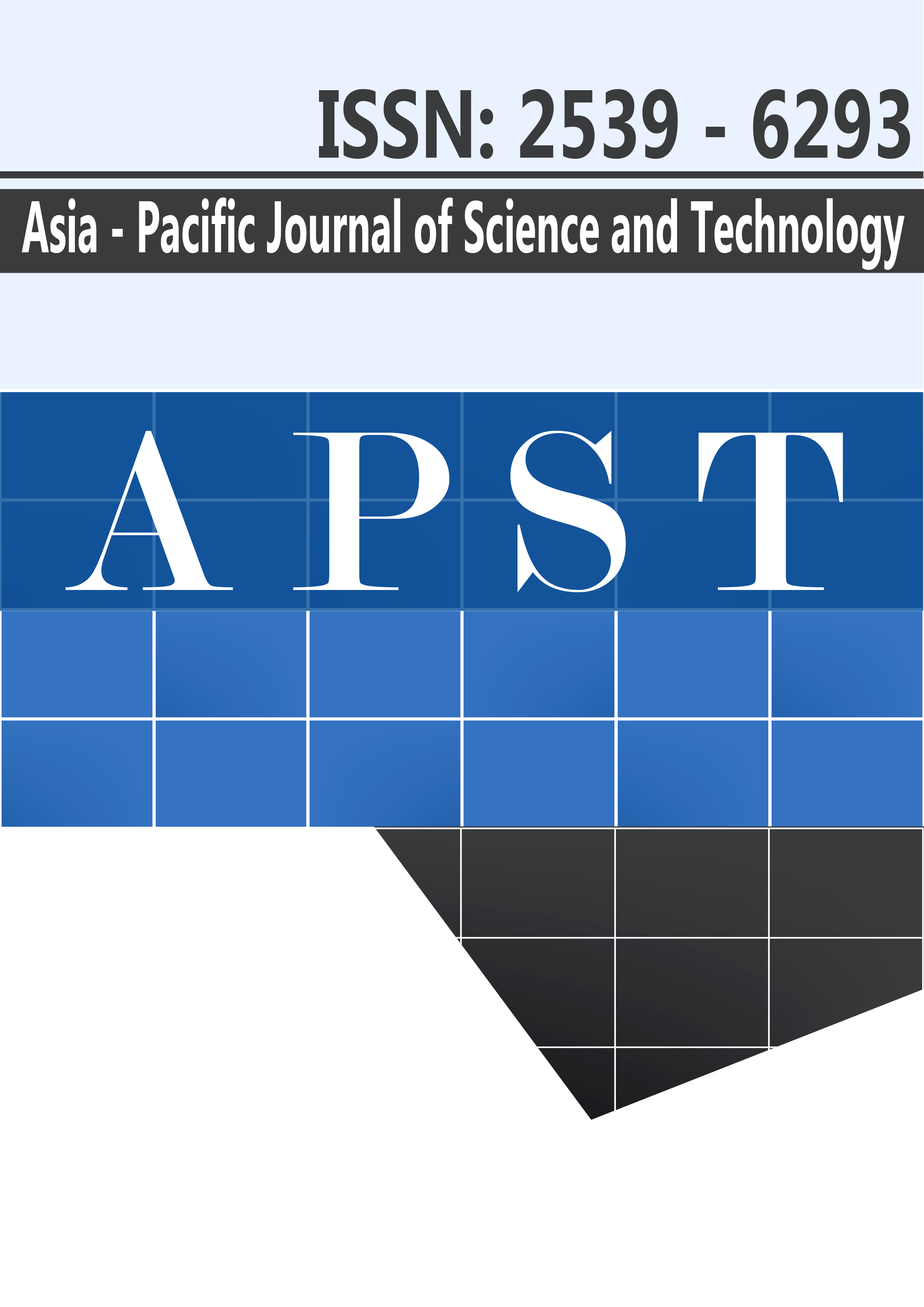A workforce scheduling model to reduce occupational heat stress and labor cost
Main Article Content
Abstract
Excessive exposure to high temperatures in the workplace is a cause of heat stress, anxiety, and fatigue in industrial workers. In workplaces in which workers are surrounded by heat sources such as furnaces and boilers, the heat exposure levels may need to be administratively controlled to adequately protect workers from excessive heat exposure. This study integrates National Institute for Occupational Safety and Health (NIOSH) recommended heat stress limits into the design of workforce scheduling models in order to mitigate the heat exposure level of workers. A binary programming model is formulated to determine the optimal workforce schedule, where the objectives are to minimize the labor cost and to minimize the temperature difference between the actual exposure levels and the recommended exposure limit adopted by NIOSH. Additional considerations include the heat tolerance of workers and task workloads. The Epsilon constraints method is used to obtain the Pareto optimal solutions. Based on the results, this study demonstrates that the average heat stress level of workers can be reduced significantly by the use of a workforce scheduling approach. In the case presented, the difference between the actual exposure levels and the recommended exposure limits of the workforce can be reduced by about 0.73 ˚C per person.
Article Details
References
Pourmahabadian M, Adelkhah M, Azam K. Heat exporure assessment in the working environment of glass manufacturing unit. Iranian J Environ Health Sci Eng. 2008;5:141-147.
Fahed Ak, Ozkaymak M, Ahmed S. Impacts of heat exposure on workers’ health and performance at steel plant in Turkey. Eng Sci Technol Int J. 2018;21(4):745-752.
U.S. Department of Health and Human Services, Centers for Disease Control and Prevention, National Institute for Occupational Safety and Health, DHHS (NIOSH). NIOSH criteria for a recommended standard: occupational exposure to heat and hot environments. Washington DC, USA. 2016;106.
Ryan A, Euler DS. Heat stress management in underground mines. Int J Min Sci Technol. 2017;27(4):651-655.
Yaoyuenyong S, Nanthavanij S. Heuristic job rotation procedures for reducing daily exposure to occupational hazards. Int J Occup Saf Ergon. 2008;14(2):195-206.
Tharmmaphornphilas W, Green B, Carnahan B, Norman B. Applying mathematical modeling to create job rotation schedules for minimizing occupational noise exposure. AIHA J (Fairfax, Va). 2003;64:401-405.
Barrera D, Velasco N, Amaya CA. A network-based approach to the multi-activity combined timetabling and crew scheduling problem: workforce scheduling for public health policy implementation. Comput Ind Eng. 2012;63(4):802-812.
Yoon S-Y, Ko J, Jung M-C. A model for developing job rotation schedules that eliminate sequential high workloads and minimize between-worker variability in cumulative daily workloads: application to automotive assembly lines. Appl Ergon. 2016;55:8-15.
Rerkjirattikal P, Olapiriyakul S. Overtime assignment and job satisfaction in noise-safe job rotation scheduling. IUKM 2019. Proceedings of the 7th International Symposium on Integrated Uncertainty in Knowledge Modelling and Decision Making; 2019 Mar 27-29; Nara, Japan. Cham: Switzerland; Springer; 2019. p. 26-37.
Ospina Mateus H, Sana S, Chedid J, Gazabon Arrieta F. Application of genetic algorithm to job scheduling under ergonomic constraints in manufacturing industry. J Ambient Intell Humaniz Comput. 2018;10:2063-2090.
Deljoo V, Al-e-hashem SMJM, Malekly H, Bozorgi-Amiri A, Aryanejad MB. Applying multi objective modeling to create safe job rotation schedules based upon workers' skills and idleness. CIE 2009. Proceedings of International Conference on Computers & Industrial Engineering; 2009 July 6-9; Troyes, France. 2009. p. 262-267.
Moussavi E, Mahdjoub M, Grunder O. Reducing production cycle time by ergonomic workforce scheduling. MIM 2016. Proceedings of the 8th IFAC Conference on Manufacturing Modelling, Management and Control; 2016 Jun 28-30; Troyes, France. 2016. p. 419-424.
Dewi DS, Septiana T. Workforce scheduling considering physical and mental workload: a case study of domestic freight forwarding. IESS 2015. Proceedings of International Conference on Industrial Engineering and Service Science; 2015 Sep 1-2; Yogyakarat, Indonesia. 2015. p. 445-453.
American Conference of Governmental Industrial Hygienists, ACGIH. Threshold Limits Values (TLVs) and Biological Exposure Indices (BEIs): Threshold limit values for chemical substances and physical agents and biological exposure indices. Cincinnati, Ohio. 2012;871-1130.
Joshi A, Psikuta A, Bueno M-A, Annaheim S, Rossi RM. Analytical clothing model for sensible heat transfer considering spatial heterogeneity. Int J Therm Sci. 2019;105949.
Rowlinson S, YunyanJia A, Li B, ChuanjingJu C. Management of climatic heat stress risk in construction: a review of practices, methodologies, and future research. Accid Anal Prev. 2014;66:187-198.
Edirisinghe R, Andamon MM. Thermal environments in the construction industry: a critical review of heat stress assessment and control strategies. In: Rajagopalan P, Andamon MM, Moore T, editors. Energy Performance in the Australian Built Environment. Singapore: Springer; 2019. p. 25-43.


